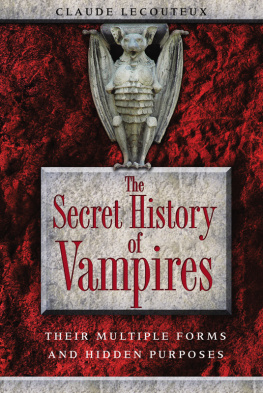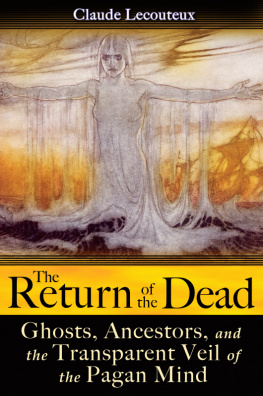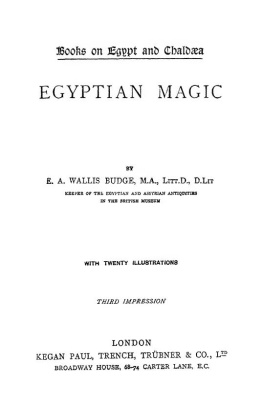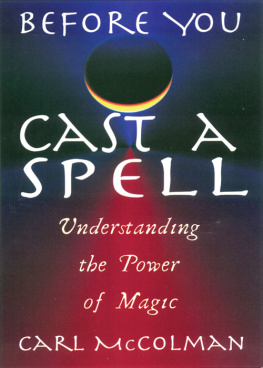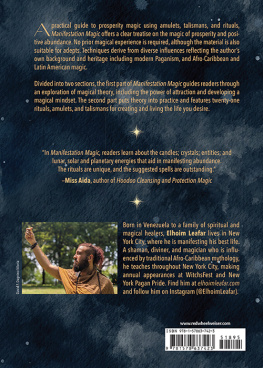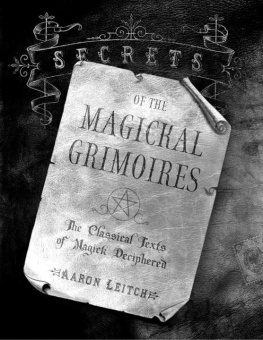Claude Lecouteux - The Book of Grimoires: The Secret Grammar of Magic
Here you can read online Claude Lecouteux - The Book of Grimoires: The Secret Grammar of Magic full text of the book (entire story) in english for free. Download pdf and epub, get meaning, cover and reviews about this ebook. year: 2013, publisher: Inner Traditions/Bear & Company, genre: Religion. Description of the work, (preface) as well as reviews are available. Best literature library LitArk.com created for fans of good reading and offers a wide selection of genres:
Romance novel
Science fiction
Adventure
Detective
Science
History
Home and family
Prose
Art
Politics
Computer
Non-fiction
Religion
Business
Children
Humor
Choose a favorite category and find really read worthwhile books. Enjoy immersion in the world of imagination, feel the emotions of the characters or learn something new for yourself, make an fascinating discovery.

- Book:The Book of Grimoires: The Secret Grammar of Magic
- Author:
- Publisher:Inner Traditions/Bear & Company
- Genre:
- Year:2013
- Rating:4 / 5
- Favourites:Add to favourites
- Your mark:
The Book of Grimoires: The Secret Grammar of Magic: summary, description and annotation
We offer to read an annotation, description, summary or preface (depends on what the author of the book "The Book of Grimoires: The Secret Grammar of Magic" wrote himself). If you haven't found the necessary information about the book — write in the comments, we will try to find it.
Includes spells, talisman formulations, and secret magical alphabets reproduced from the authors private collection of grimoires, with instructions for their use
Explains the basic principles of medieval magic, including the doctrine of names and the laws of sympathy and contagion
Offers an overview of magic in the Western Mystery tradition
Grimoires began simply as quick-reference grammar books for sorcerers, magicians, and priests before evolving into comprehensive guides to magic, complete with spell-casting rituals, magical alphabets, and instructions to create amulets and talismans. With the advent of the printing press, some grimoires were mass produced, but many of the abbreviations were misinterpreted and magical words misspelled, rendering them ineffective. The most powerful grimoires remained not only secret but also heavily encoded, making them accessible only to the highest initiates of the magical traditions.
Drawing on his own private collection of grimoires and magical manuscripts as well as his privileged access to the rare book archives of major European universities, Claude Lecouteux offers an extensive study of ancient books of magic and the ways the knowledge within them was kept secret for centuries through symbols, codes, secret alphabets, and Kabbalistic words. Touching on both white and black magical practices, he explains the basic principles of medieval magic, including the doctrine of names and signatures, mastery of the power of images, and the laws of sympathy and contagion. He gives an overview of magic in the Western Mystery tradition, emphasizing both lesser-known magicians such as Trithemus and Peter of Apono and famous ones like Albertus Magnus and Hermes Trismegistus.
Creating a universal grimoire, Lecouteux provides exact reproductions of secret magical alphabets, symbols, and glyphs with instructions for their use as well as an illustrated collection of annotated spells, rituals, and talismans for numerous applications including amorous magic, healing magic, and protection rites. The author also examines the folk magic that resulted when the high magic of the medieval grimoires melded with the preexisting pagan magic of ancient Europe.
Claude Lecouteux: author's other books
Who wrote The Book of Grimoires: The Secret Grammar of Magic? Find out the surname, the name of the author of the book and a list of all author's works by series.

